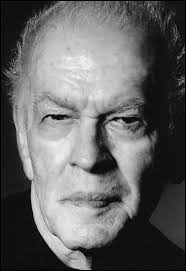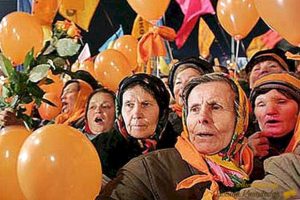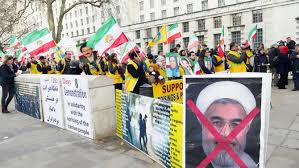
The colour revolutions have ended the classic war. War was understood as the beginning of hostilities between two states and their subsequent confrontation by armies, but today it has dissolved into an ocean of new forms of open confrontation. In a world of hybrid warfare, one never knows what lies behind every social event or even behind natural disasters. From information warfare to cyber warfare, there are countless ways to attack a state without resorting to open military confrontation. Within hybrid warfare we find excellent ways to harass a state by mobilizing the population against its government. These types of warfare tactics are cheaper and more discreet, but not always useful. To mobilize large masses of people against their government we can rely primarily on the work of Gene Sharp, who investigates the path to overthrowing what he sees as dictatorships or tyrannical regimes through the well-known colour revolutions.
In his work, the American political scientist extracts a series of manuals in which he exposes various ways of defeating the political power of a country without having to resort to violent methods. The reasons why the American author focused on this field of study may be laudable, but his work has remained a precious resource in the arsenal of political regimes of various kinds. Sharp's tactics have been applied to multiple international events over decades, by democratic and undemocratic governments alike.
Sharp in his analysis of political power suggested that there was consent between political power structures and the governed population, so he theorized ways to break the consensus with tactics based on mass public mobilizations. On the other hand, Sharp points out that all political and administrative structures have disagreements between executive personnel or between administrative departments. For these reasons, the author proposes that mass mobilizations of citizens should aim to highlight frictions between different administrations and the actors of political power.
The aim of Sharp's work is to break what the Prussian strategist Carl vonClausewitz already called in the 19th century The Trinity, which is roughly the harmony between the elites, the army and the population. Sharp assumes that demands for political change will not be allowed by the powers-that-be. He also believes that the use of violence by guerrillas or terrorist groups can harden repression, and he also assumes that a coup d'état can fail, just as gradual civil protest can take decades; the solution for the author is to mobilize a fifth civil column within the target state. Sharp's work has been applied countless times from the 1970s onward, and in many other cases, he may suspect that it has been used as well.

Applying Gene Sharp's work is relatively inexpensive; all you need is some pre-trained false social bases and Internet access to distribute propaganda. This mobilization technique is called astroturfing. It is a tactic widely used by pressure lobbies in all Western-style democracies.
At the political level, it is usually developed by public relations agencies in conjunction with the intelligence services. It is essential that the tactical operation be generated by civilian personnel, preferably with any skill recognized by the native population, such as an actor, politician, or popular singer. This type of covert operation cannot be executed by military personnel because then it would be an act of open warfare. There have been multiple colour revolutions that pretended to be a legitimate protest by the native population, when in reality they were tactics within operations carried out by hostile third countries.
In Serbia, the Otpor (resistance) movement was established, which forced Slobodan Milosevic out of power. In the United States, the Iran180 movement emerged, which, while claiming to be only an organization that defended human rights for the Iranian people, engaged in street protests in Iran while flooding the Western media with anti-Iranian propaganda. In Ukraine, we saw the world famous Maidan Revolution, where a crowd of well-trained streetfighters could be seen pretending to be peaceful protesters, while overthrowing the government of Victor Yanukovych. Srdja Popovic had been one of the leaders of the Otpor movement, now he led the organization CANVAS (Center for Applied Nonviolent Action and Strategies). That organization is supposed to prepare the logistics of countless false social bases around the world; it seems that Sharp's tactics have been standardized and universalized.
 The manipulation of social movements is one of the recurrent forms of hybrid warfare between states. It is complicated to analyze when a campaign is created and fed from the outside, but with the contrasting cases that exist there is always reasonable doubt about all those mass protests that seem to be spontaneous. We recently saw the streets of Hong Kong filled with well-organized protesters against China's extradition bill. Time will show whether these protests were an instinctive reaction from the native population, or whether they were financed and directed by third party actors maneuvering from the shadows. The same conclusion can be drawn from any other spontaneous social protest around the world. It is already difficult to trust the media's portrayal.
The manipulation of social movements is one of the recurrent forms of hybrid warfare between states. It is complicated to analyze when a campaign is created and fed from the outside, but with the contrasting cases that exist there is always reasonable doubt about all those mass protests that seem to be spontaneous. We recently saw the streets of Hong Kong filled with well-organized protesters against China's extradition bill. Time will show whether these protests were an instinctive reaction from the native population, or whether they were financed and directed by third party actors maneuvering from the shadows. The same conclusion can be drawn from any other spontaneous social protest around the world. It is already difficult to trust the media's portrayal.
 Copyright secured by Digiprove © 2019 Quixote Globe
Copyright secured by Digiprove © 2019 Quixote Globe